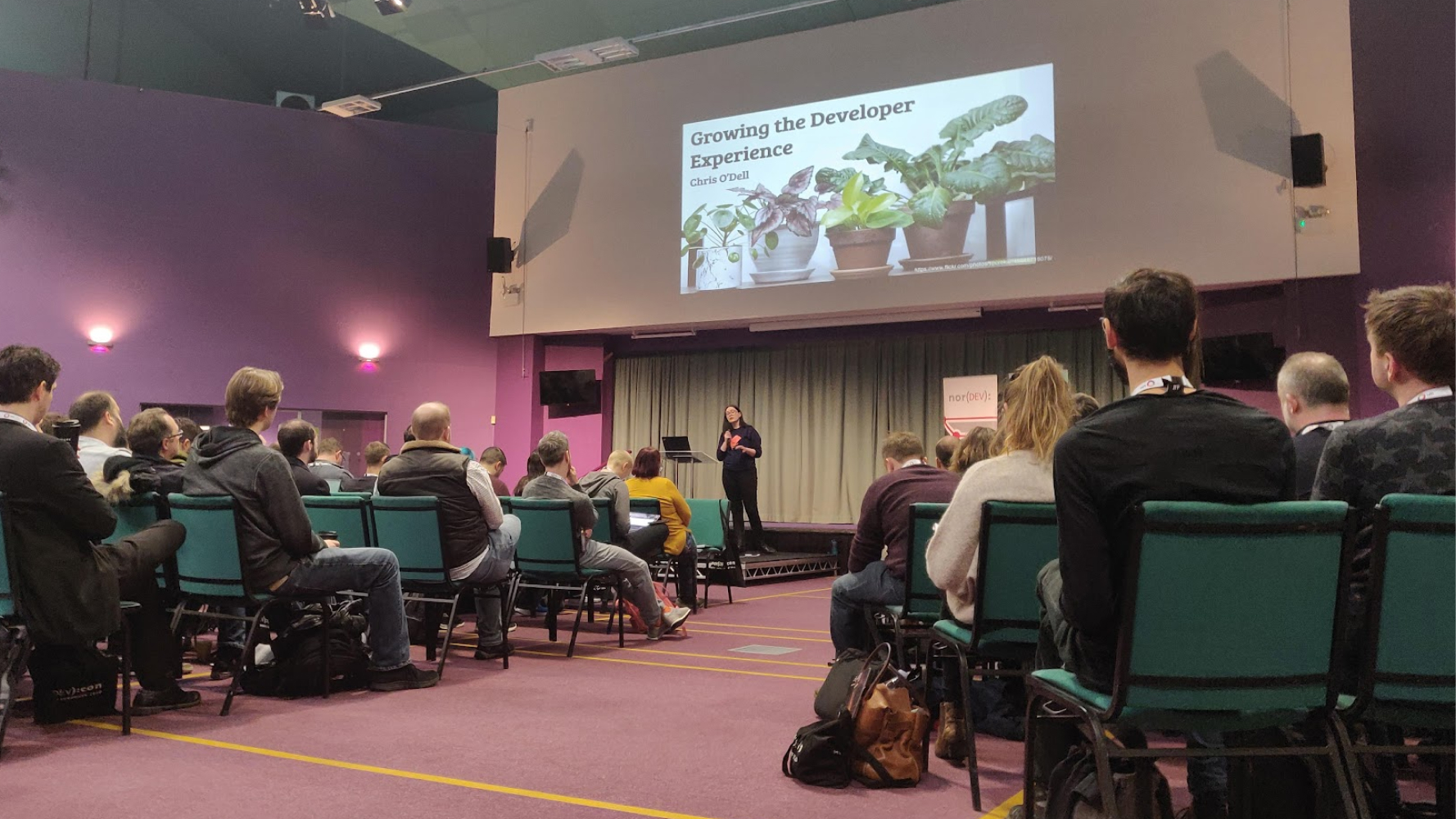Escaping a paper bag
by Celina Bledowska, on 8 June 2022
When machine learning and AI specialist, Fran Buontempo, approached nor(DEV):22 with her conference speech title: ‘Coding your way out of a paper bag,’ we were puzzled. Was this some esoteric philosophical thesis, or would the keynote speech really explain how to code out of a paper bag?
Out of hand project
Fran Buontempo heads up her own consultancy where she works as a development dev ops contractor for investment banks in London, specialising in modelling and has a PhD in machine learning. When asked about her paper bag conundrum, Fran explained:
Tt comes from the phrase that came to me after interviewing an unsuccessful job candidate, ‘that guy couldn’t code their way out of a paper bag.’
This set her thinking and Fran realised she didn’t know how to use code to escape a bag. Therefore, the question of how to carry out this task saw the light of day. Is this possible or not?
The task
“You can model a paper bag with a square or a rectangle and then you want something inside it that moves and will end up outside the bag. You could completely over-engineer this with machine learning tools and algorithms or you could run a simulation or diffusion. Flecks or dots can start in the middle and then gradually spread out.”
Fran suggests that the audience thinks of a gas moving within a gas model that will only require some adding up (computer led task), or orange squash diffusing once water is added to the squash is another way of understanding the problem.
By using this model, Fran suggests that this is a simplified way of explaining and learning more complicated ideas..
Machine learning
Fran is looking forward to giving the conference a “walkthrough of genetic algorithms and how these can be used to escape the ubiquitous bag.” She explains a genetic algorithm as, “using the idea of genetics as an algorithm rather than biology, a ‘nature inspired algorithm,’and Darwinian evolution in order to evolve a solution for something.” “All you actually do,” Fran continued, “is try with random attempts, as carrying out numerous permutations would be too time consuming, and then I’ll be able to deduce which ones are better, and this will give you more to experiment with.” She added, “through numerous experiments you will be able to prove your premise.”
In short you’ll be trying stuff, keeping track of what you’ve done and making things improve.
Experimenting and science
In an attempt to understand how things actually work, Fran codes from scratch. For example, the pandemic threw up numerous problems where machine learning was used to find an answer.and she believes that if you’re trying to model Covid and trying to work out what type of things might stop the spread, you could take a pre-built mathematical model and send in some parameters and numbers, and lots of libraries will do things for you. This is the methodology applied by most data scientists. But Fran is keen to add that you can build things yourself.
Many people use Python in this field as there are many Python libraries that let you click together pre-existing pieces. Fran uses Python too but is happy to switch to C++ and other languages.
Back to that paper bag. To find out how you can code your way out of this receptacle, you can catch Fran’s keynote speech at 16.15 on 16 June.
 The eastern region's biggest tech conference
The eastern region's biggest tech conference
Join us for the incredible line-up on the 25-27th February 2026
Get your ticketSee the schedule